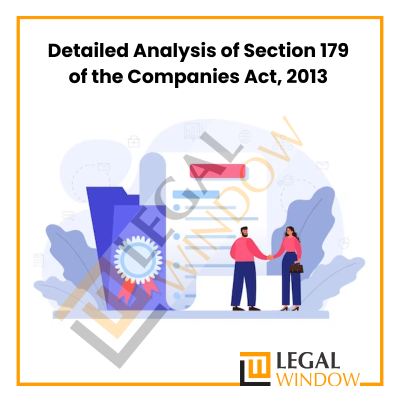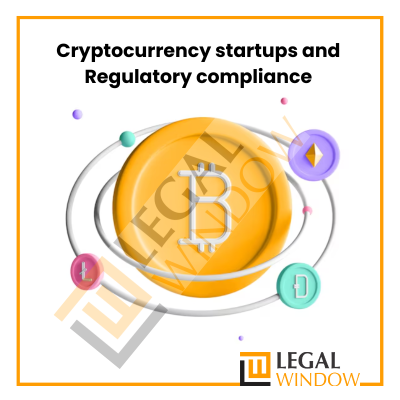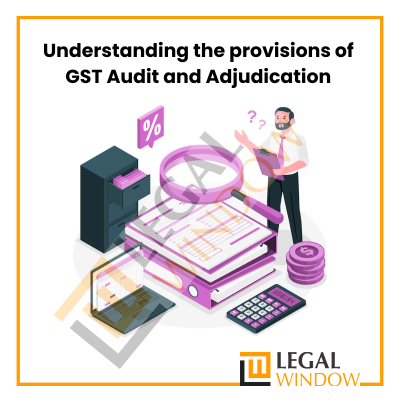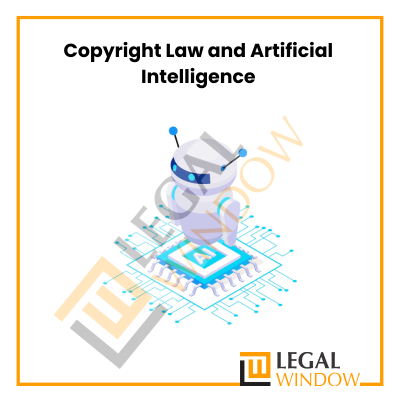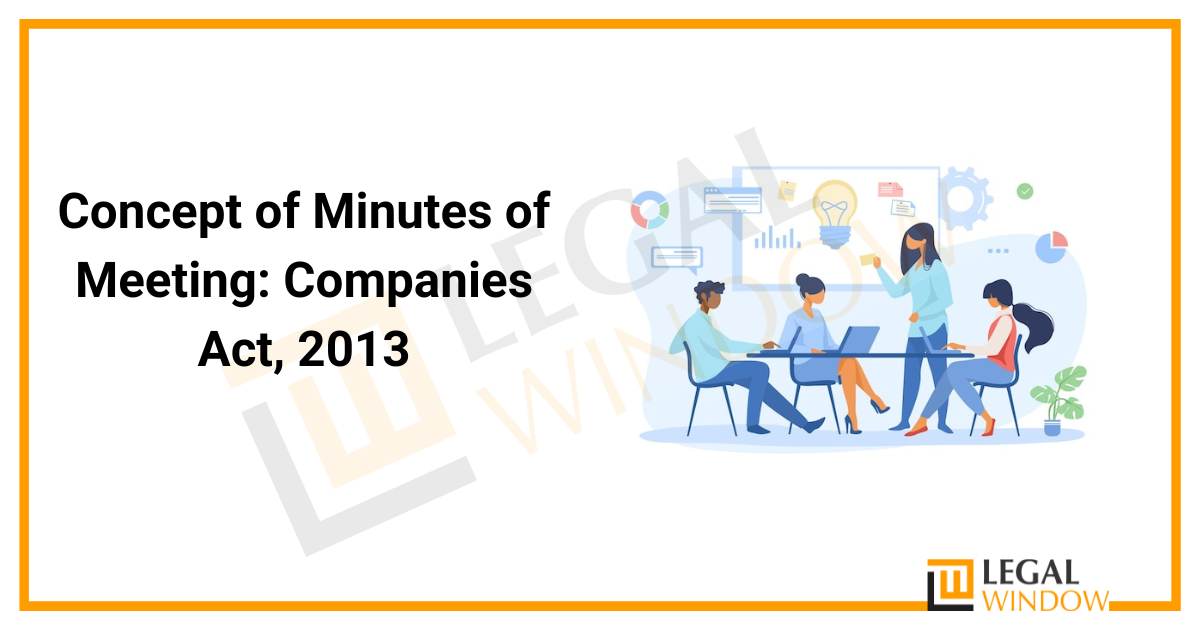 A Company is an official entity that involves formal transactions. Every gathering, communication, or transaction which has the potential to affect any interest of the members shall be recorded. These records achievements help in tracking the developments and changes in the functioning of the business.
A Company is an official entity that involves formal transactions. Every gathering, communication, or transaction which has the potential to affect any interest of the members shall be recorded. These records achievements help in tracking the developments and changes in the functioning of the business.
The notes or recommendations recorded during such meetings of the company are Meeting Minutes. They include extracts of the conversations made during the gathering of the company. In formal environments, meeting notations are reserved to provide a record of the conversation to refer them in the future. This Article discusses the overview and importance of Meeting Minutes of a Company and the procedure by which they are recorded.
Abstract
Minutes are recorded whenever the officials associated with a company gather for an executive meeting. The moments are noted as a formal archive of the meeting by way of casual notes and conventions. In simple terms, all the instances of the meeting which include any information of formal and mutual nature and is relevant to the gathering or hearing, as the case may be, are minutes of the meeting.
These minutes reserve the purpose and the occasion of the gathering. They may include assertions over the raised issue by the participants in the meeting, considerable reactions, and choices over the raised issues by the concerned members present. However, the minutes shall only consist of a compilation of noteworthy information which is capable of being recorded and every other piece of information irrelevant to the object of such recording shall be skipped.
Meaning of Meeting Minutes as per Companies Act, 2013
Minutes are formally written records of the proceedings of a Meeting which are kept in a physical or electronic format. They are also known as MoM (Minutes of Meeting) and include all the informally taken notes by following protocols formally and instantly recording the meeting or hearing in a written format. This procedure helps in describing the events that took place at the meeting and may include a list of statements of the raised issues, a list of attendees/participants, considerations and responses by the participants, and lastly the relevant decisions over the issues.
Provisions Applicable as per Companies Act, 2013
The concept of Meeting Minutes is dealt with by the virtue of the following provisions:
- Section 118 of the Companies Act, 2013– “Minutes of proceedings of General Meeting of Board of Directors and resolutions passed”- The sub-section (1) of Section 118 of the Companies Act, 2013 provides that every company shall record minutes of the general meeting’s proceedings. Such meetings shall be of any class of creditors or the shareholders of the company. Every resolution shall be passed by a postal ballot and every meeting; either of its Board of Directors or of every committee of the Board shall be signed and prepared in the manner prescribed.
A separate book for meeting minutes shall be maintained for each meeting such as:
- General Meetings (Members),
- Board Meeting (Directors),
- Meetings of each Committee of the Board, or
- Meetings of the Creditors
Rule 25 of the Companies Management and Administration Rules, 2014
“General Meeting proceeding Minutes of Board of Directors and the resolutions passed by postal ballot method”- Rule 25 of the Companies Rules states that minutes of each proceeding following concerned meetings shall be recorded and maintained in written Format. The specified Rule enhances the provision envisaged under section 118 of the Companies Act, 2013, and re-clarifies the terms and conditions relevant to recording the Meeting Minutes. The formal terms so listed can be looked into brevity as follows;
- Duration of Recording– Within thirty days of the conclusion of the meeting, the minutes of the concerned meeting shall be recorded in the book specifically maintained for that reason,
- Resolution Report Summary– A brief report of the summary of the report the reviewer shall be prepared whenever a resolution is passed by postal ballot with the date of passing of such resolution annexed to it. The purpose of keeping a summary report of resolution is to capture the issues, considerations, and decisions of them the concerned participants for reference in the future.
- Venue of Meetings- Such meetings of the company provisionally shall always be kept at the registered office or as an exemption at the place where the board may decide. The venue of the meetings is important from the perspective to keep track of the company’s formal affairs and custody of the books of meeting minutes preserved safely.
- Custody of Records- Apart from the venue, the provisions also provide a place of custody with the authority of which the minute books are to be preserved. The custody shall be with the Company Secretary or any other authorized director that is duly decided by the concerned board.
Other similar legislations that can trace the concept of Meeting Minutes can be observed in these two specific standards which are more or less similar to the above-mentioned provisions;
- Secretarial Standard SS-1: “Meetings of the Board of Directors”
- Secretarial Standard SS-2: “General Meeting”
Importance of Meeting Minutes
Minutes of meetings are recorded for keeping an organized track of the important issues and decisions of the Company. However, there are various other reasons in which recording minutes can be beneficial that can help in keeping the organization developing in a healthy way. Some of the important aspects of meeting minutes can be observed as follows:
- Structure – Minutes of a Meeting provides a platform for the brief outline of the issues, the noteworthy actions that are expected to be taken, and thereafter setting a structure for future reference. This procedure establishes a foundation for the track of issues and steps necessary for the development of the Company.
- Results– Another important aspect of the Meeting Minute procedure is result driven approach of the organization. Not only do these notes help in tracking the progress of the organization to meet its expectations but also allow leaders and members to come forward with recommendations over specific tasks.
- Transparency – After the conclusion of the gathering, these notes help in creating a transparent space for every member, participant, and individual concerned regarding the issues, recommendations, inclination of the members, and the current track of the company. In short, it provides an analysis to compare between present scenario and the expected scenario for the working of the company.
Procedure to Record Meeting Minutes Effectively
When the meeting ends, the procedure to record the Minutes of the Meeting starts. After which, the notes and recommendations are reviewed and recorded. The Meeting Minutes shall be recorded in the following manner;
Pre-planning (Before the Meeting) – An agenda of the meeting must be created before the meeting starts to give a structure to the meeting and to provide the organization with an outline for crafting the expected meeting minutes and notes. This helps in staying on track and ensures that all the participants are prepared for the session. In addition to an agenda, the meeting minutes must be pre-filled with the appropriate information like the date of the meeting, location, time, issues to be raised, list of participants, and other necessary details that are known to the organization. This step saves time during the session.
Recording and Noting down the Minutes (During the Meeting) –Meeting minutes don’t need to have a record of all the information that was transacted during the meeting. Only important things need to be covered in a clear and concise format. The focus must be on capturing the issues raised and decisions made thereafter. However, if a particular issue triggers the debate it must be noted with the argument raised by each side and the final decision that was arrived at.
Circulation of Minutes and Storing Minutes for future reference (After the Meeting) – Once the Meeting concludes the notes and recommendations must be circulated to each participant for their signature. The purpose of circulating and taking signatures is to make each concerned member aware of the list of record for their acknowledgment on it. After which the notes are preserved and referred to in the future to compare if the expected recommendations have finally arrived at the desired conclusion.
Steps of Recording Minutes
There are several steps that must be followed during the Meeting to simplify the process. Some of which can be observed as follows:
- The content that is prepared for Minutes shall be printed only on sheets reserved for recording Minutes of Meeting,
- The pages of the book in which the Minutes are to be recorded shall be numbered in sequence, and
- The Minutes shall be recorded in the third person and in present tense etc.
Venue of Meeting Minutes
Once the Meeting concludes, it becomes necessary to preserve the minutes of such meeting. The provision provides that the minutes of the meetings shall be kept either at the Registered Office of the company or at any such place as the board may approve.
The information recorded in Meeting Minutes
The content that is to be recorded in Meeting Minutes includes various sets of information which include a variety of information from the Dates of the meeting, Attendance of the Participants to the notes of the resolution passed after the circulation. The content can be divided into two types which are discussed below-
General Information–
- Information that is of basic nature can be considered General content. These may include;
- Date of the Meeting,
- Time of Meeting,
- Venue at which the Meeting will be organized,
- List of the Participants/Attendants,
- Nature of Meeting,
- Name of the organization,
- Name of the directors and their presence at the meeting,
- In the case of several meetings in the past, the serial number of presently held meetings,
- Name of the Company Secretary,
- Issues for consideration etc.
Specific Information–
- These sets of information include;
- Electing Chairman to preside the Meeting,
- Noting down resolution expected to be passed, by circulation,
- Ascertaining the quorum,
- Confirming minutes of preceding meeting,
- Grant of Leave in absence of the director,
- Mode of Attendance for the directors etc.
Finalization and Circulation of Meeting Minutes
Soon as the meeting ends, the Company Secretary or any other such person as is authorized by the board presents the extracts before the Chairman that were recorded during the meeting. It is done to finalize the draft by circulating it to the authorities. The draft minutes are circulated to all of the directors of the company on which their comments are requested.
Such recorded notes shall be circulated to all of the directors within 15 days from the date of the conclusion of the meeting. After which the director in written shall communicate their opinions and comments on the minutes within 7 days from the date the minutes were circulated. However, the Chairman shall have the discretion to consider the comments if any of the directors communicate his opinions after the period of 7 days expire. And when no comments have been made by a director on the minutes, it will be deemed as acceptance by such director.
Signature of Authority on Minutes
Meeting Minutes shall be signed by the Chairman of the Meeting. The Chairman shall put their initials on each page of the recorded Minutes and shall sign the last page of the respective meeting. With initial, date and place shall also be mentioned on the last page by the Chairman. However, if the minutes are recorded in a digital format, then they shall be digitally signed.
Circulation of Meeting Minutes after signing
The Company Secretary or director authorized by the board shall certify a copy of the signed minutes which further will be circulated to all the directors within the next 15 days of signing.
Correction in Minutes
Meeting Minutes are distributed to consider the approval of the members and suggest corrections. However, the corrections can be made even after the minutes are approved. But if the minutes were already approved and the necessity arises for correction, then a “Motion to Amend” will need to be considered at a succeeding meeting. If this motion is then accepted, the minutes that were previously adopted will be amended by making adequate corrections. Approved minutes are signed by the Company secretary before becoming a part of the official record of the meeting.
Inspection of Minutes
The Minutes of the Meeting are inspected by the Company Secretary, Directors, Statutory Auditor, Secretarial Auditor, Cost, and Internal Auditors. The Meeting Minutes cannot be inspected by the members of the company. Only Directors are entitled to receive the extracts of the Minutes.
What not to include in Meeting Minutes?
The provision expressly reflects that the following must not be included in the Meeting Minutes;
- Reasonably defamatory content,
- Irrelevant or immaterial content to the proceeding, or
- Anything that is detrimental to the Company’s interest
The Chairman shall be entitled to exercise oblivious discretion in regards to the inclusion or non-inclusion of any content in the Minutes on the grounds mentioned above.
Penalty
The company shall be liable to pay a penalty of 25,000/- Rs. in case of any default in complying with the provisions of the mentioned section in respect of any of the meetings. And every officer who is found to be in default shall be liable to attract a penalty of 5,000/- Rs.
Apart from it if a person is found guilty of the offense of tampering with the Minutes, in such case they shall be punishable with imprisonment for a term of 2 years with a fine that can be anywhere between 25,000/- Rs. to 1,00,000/- Rs. as per the discretion of the authority.
 Final Word
Final Word
Every organization includes formal transactions and formalities which potentially affect the interest of the other members. Therefore, concepts envisaged in provisions such as Meeting Minutes provide clarity to all the members, directors, and the persons concerned with the developments and track of the operations of the Company.
Meeting Minutes keep a track of the issues raised by the members, recommendations provided on such issues, and the decisions are taken by the participants to analyze everyone’s inclination. The records in form of minutes are then kept for referring them in the future.
CS Urvashi Jain is an associate member of the Institute of Company Secretaries of India. Her expertise, inter-alia, is in regulatory approvals, licenses, registrations for any organization set up in India. She posse’s good exposure to compliance management system, legal due diligence, drafting and vetting of various legal agreements. She has good command in drafting manuals, blogs, guides, interpretations and providing opinions on the different core areas of companies act, intellectual properties and taxation.
Categories
- Agreement Drafting (23)
- Annual Compliance (11)
- Change in Business (36)
- Company Law (148)
- Compliance (89)
- Digital Banking (3)
- Drug License (3)
- FEMA (17)
- Finance Company (42)
- Foreign Taxation (6)
- FSSAI License/Registration (14)
- GST (118)
- Hallmark Registration (1)
- Income Tax (199)
- Latest News (34)
- Miscellaneous (164)
- NBFC Registration (8)
- NGO (14)
- SEBI Registration (6)
- Section 8 Company (7)
- Start and manage a business (20)
- Startup/ Registration (126)
- Trademark Registration/IPR (40)
Recent Posts
- Detailed Analysis of Section 179 of the Companies Act, 2013 April 24, 2024
- Maximise Your Tax Savings: Power of Form 12BB April 23, 2024
- Cryptocurrency startups and Regulatory compliance April 22, 2024
About us
LegalWindow.in is a professional technology driven platform of multidisciplined experts like CA/CS/Lawyers spanning with an aim to provide concrete solution to individuals, start-ups and other business organisation by maximising their growth at an affordable cost.

